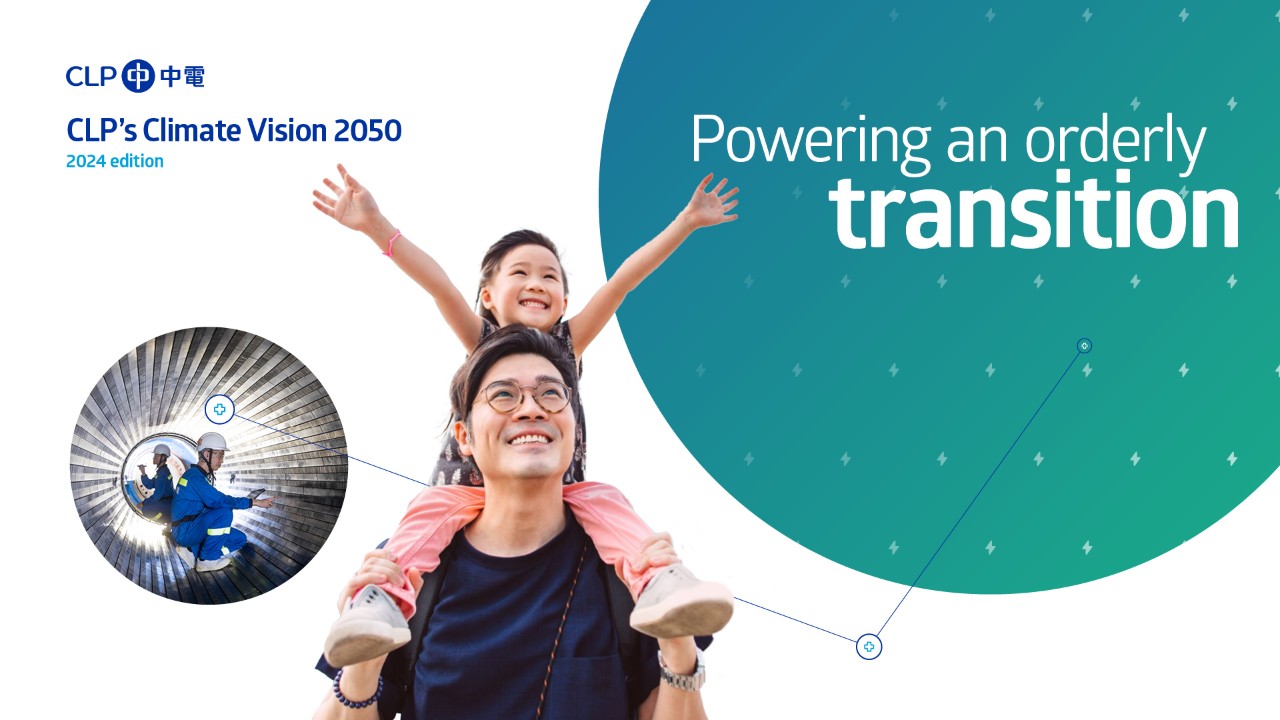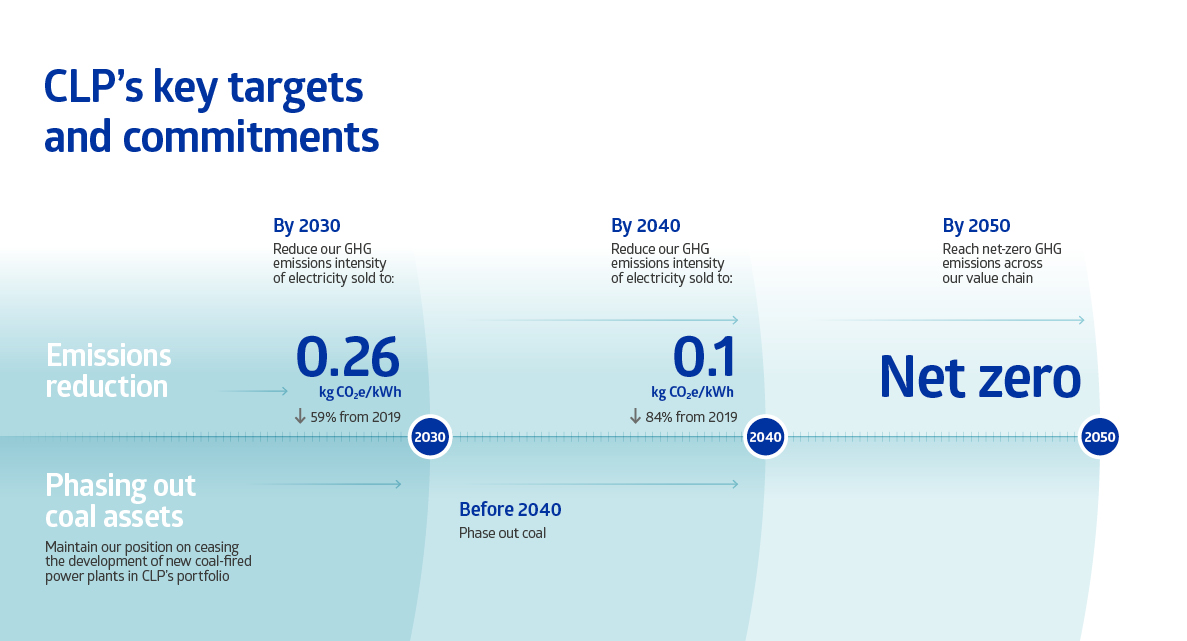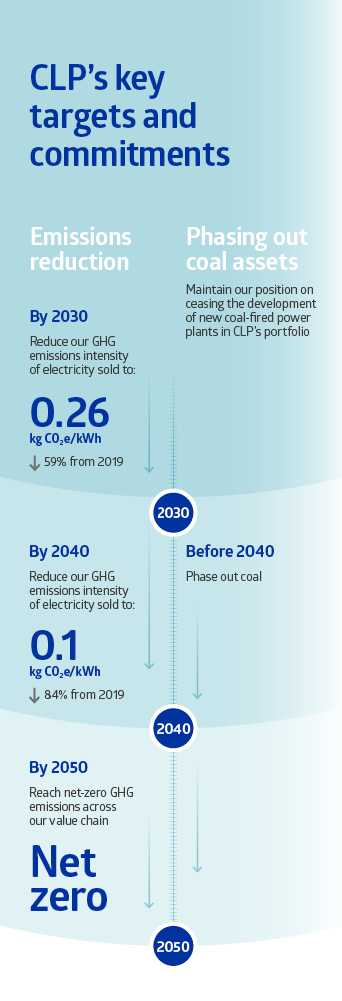Decarbonisation is one of CLP’s main priorities for our transition. As the pace of change in the energy industry continues to accelerate, we recognise that the once linear and traditional electricity sector value chain has morphed into an interconnected and multidirectional mesh of opportunities with which we need to evolve. While wind and solar technology continues to improve, battery and other energy-storage solutions are also evolving fast and starting to contribute to grid stability.
Decarbonisation
CLP's Climate Vision 2050

CLP’s Climate Vision 2050 is the blueprint of the Group’s transition to a net-zero greenhouse gas emissions business by mid-century. It has informed our business strategy since its launch in 2007 and supports our long-term development. It is also integral to our broader climate strategy and takes into consideration our climate scenario analysis and assessment of climate-related risks and opportunities.
In the latest edition, we not only set out our targets and commitments, but also detail our supporting action plans on decarbonising our power supply and accelerating the energy transition across sectors. It was prepared by mainly referencing guidance from the International Sustainability Standards Board’s (ISSB) IFRS S2 Climate-related Disclosures.
-
Read CLP's Climate Vision 2050
Following an extensive target review process between 2023 and early 2024, CLP strengthened its greenhouse gas emissions intensity target for 2030 to bring it closer to the goal of limiting global warming to 1.5⁰C, while maintaining existing commitments including phasing out coal before 2040.
Globally, our collective approach to decarbonisation needs bolder action. CLP acknowledges its responsibility to play a role in these efforts in consideration of climate science, industry best practices, market developments and the growing expectations of our investors, customers, regulators, employees and other stakeholders.
We are committed to reviewing our climate transition plan and targets at least every three years. Drivers for acceleration will include step changes in climate and energy policy, technology advances as well as support from governments in the markets where CLP invests. During the transition, we will also seek to strike a balance between financial sustainability, environmental best practices and social responsibility while taking market needs and regulatory changes into account.
Our Targets and Commitments
- Cease the development of new coal-fired power plants in CLP’s portfolio;
- By 2030, reduce our greenhouse gas emissions intensity of electricity sold to 0.26kg CO2e/kWh;
- Phase out coal before 2040;
- By 2040, reduce our greenhouse gas emissions intensity of electricity sold to 0.1kg CO2e/kWh; and
- Achieve net-zero greenhouse gas emissions across our value chain by 2050.
Our Progress
As we strive for our 2050 target, we have also laid out interim goals. This is to enhance the transparency of our climate response.
Following the release of CLP’s first Climate Vision 2050 in 2007, CLP has fulfilled its decarbonisation targets in 2010 and 2020 by reducing the carbon intensity of its generation portfolio to below 0.8kg CO2/kWh and 0.6kg CO2/kWh respectively. A more extensive elaboration of our annual progress can be found in our Annual Report and Sustainability Report.
Furthermore, to help our stakeholders better understand how we manage climate-related risks and opportunities that impact our business, we explain our approach to climate scenario analysis and related assessment in the “Managing climate-related risks and opportunities” section of CLP’s Climate Vision 2050.
Our Key Approaches
Please read our Sustainability Report for our latest response to climate change, or visit the CLP Power Hong Kong, EnergyAustralia and Apraava Energy websites to learn more about our operations and businesses in Hong Kong, Australia and India.
Financing Climate Action
The CLP Climate Action Finance Framework (CAFF) details our proposition to raise climate action finance including bonds, loans and other forms of finance (CLP Climate Action Finance Transactions), as well as to use the proceeds of those CLP Climate Action Finance Transactions to invest in projects that are consistent with CLP Group’s investment and climate strategies.







